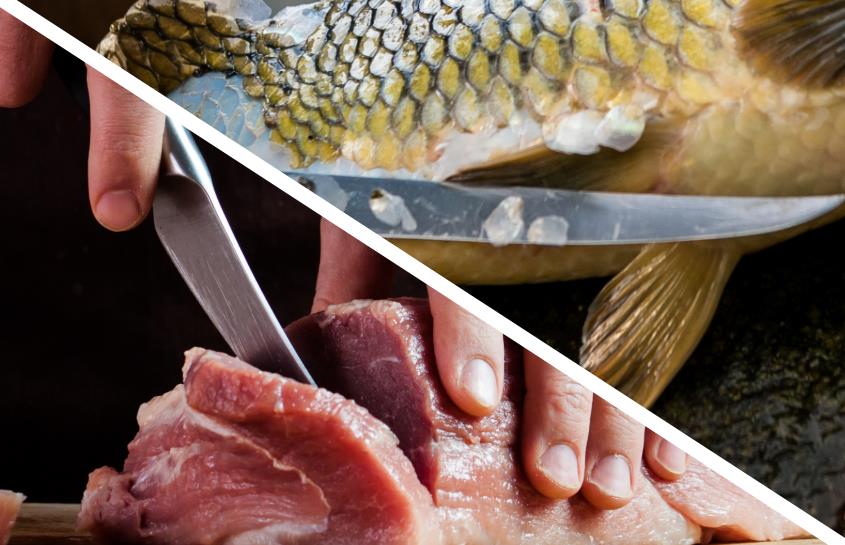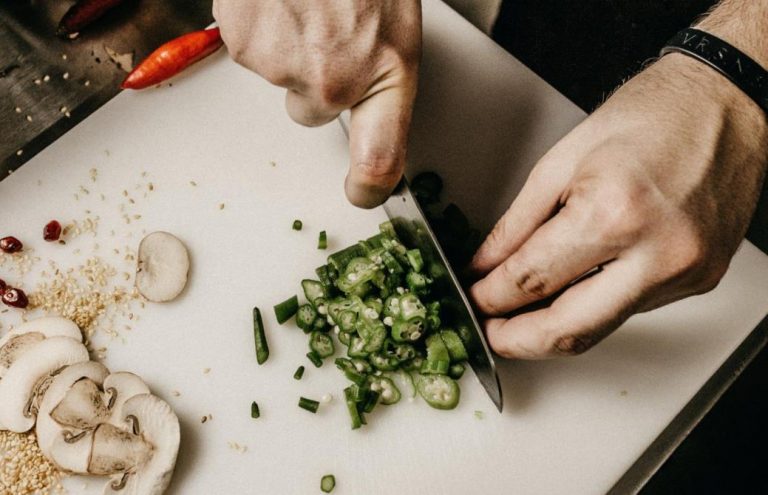Although it’s common for people to confuse the two, some significant differences settle the score in the boning knife vs. fillet knife dilemma.
With a considerable design overlap between them, customers are easy to assume that these knives serve the same purposes. That’s incorrect and potentially dangerous since the minor differences make them suitable for distinct scenarios.
If you want to increase the success of your store, you should be able to predict your customer’s needs and be ready to fulfill them, even before they know what they need.
That’s why understanding the subtleties of these two knives will help you put them before customers who can use them optimally.
What is a boning knife?
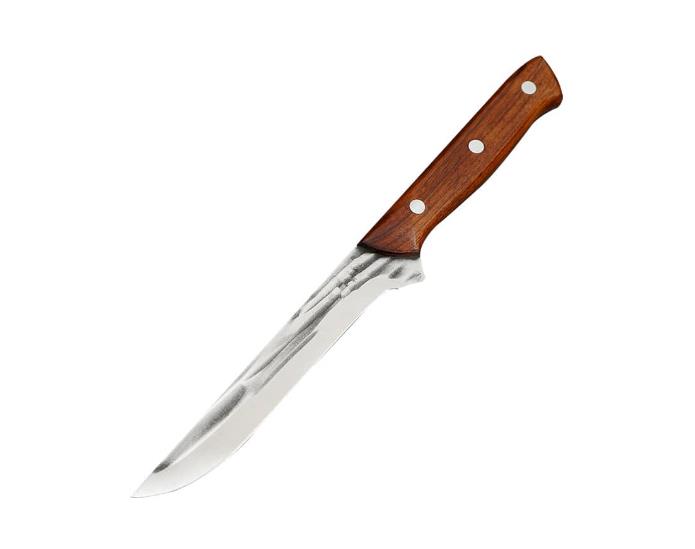
As the name suggests, a boning knife is generally used for separating meat from bones. They are specialized tools used for butchering, yet they prove helpful in various kitchen tasks, including preparing fish.
Boning knives are relatively small, ranging between 5 and 8 inches, with the ideal size coming down to the customer’s preference.
Smaller blades offer an increased level of control, while longer blades are more effective and save more time when working with specific cuts of meat.
Their narrow blade ends in a sharp tip, making it easy to pierce through the skin, fat, and connective tissue. Since its primary purpose is to cut through meat and small bones, a good boning knife should have a thick, stiff blade.
This also helps the knife remain razor-sharp for longer, decreasing its chances of ripping through meat rather than cleanly slicing it.
Since this knife will constantly be in contact with raw meat, the choice of its handle material is critical. Wood handles are stylish and secure but can warp with excess moisture.
Metal handles are durable and easy to maintain, but they can get slippery and uncomfortable to use for extended periods.
An excellent handle choice is polypropylene, which is quite stable, can take the appearance of wood, and comes with none of the maintenance issues.
Buy Wholesale Knives and Start Scaling up with Us Today
Contact us and connect with a sales rep to get a free quote.
What is a fillet knife?
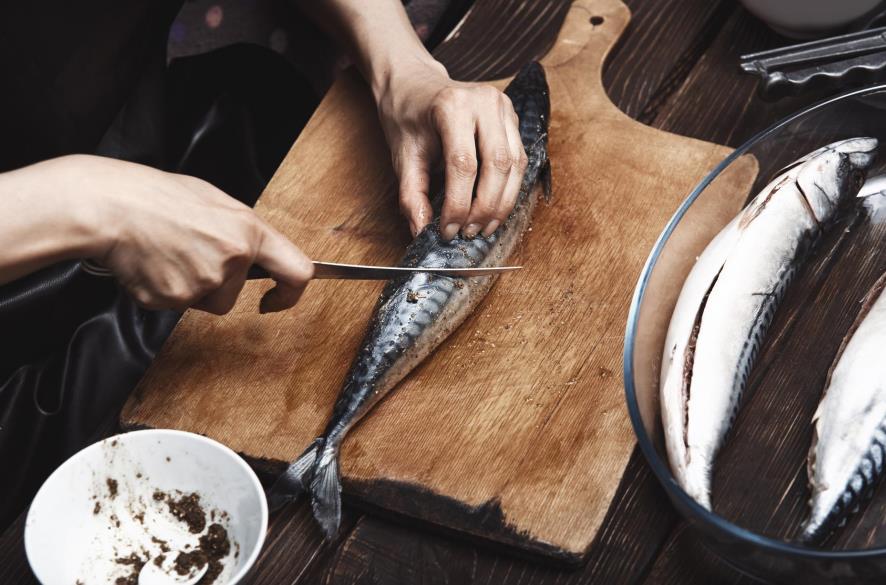
It’s common for people to confuse fillet knives with boning knives since they look very similar. Yet, the small differences in design influence their purpose and utility.
A fillet knife has more variation in length than a boning knife. They are manufactured between 4 and 9 inches, with the standard sizes being 4, 6, 7.5, and 9 inches.
However, this variety does not give them a wider range of uses since these knives only specialize in filleting, skinning, and deboning fish.
Their blade is a bit narrower and features a wider curve in their cutting belly. The material is also a lot more flexible, allowing for precision cutting and working around the delicate meat of fish without affecting the final quality or presentation.
Fillet knives can be used for both fresh and saltwater fish but are not generally used for preparing sushi or sashimi. They are very helpful during the first stages of preparing fish, whereas the final artistry is left to knives such as the Yanagiba.
When working with fish, excess moisture is a given, so fillet knives should provide excellent grip and be water-resistant.
Rubber and pitted metal handles offer both these qualities while also being very easy to clean and sanitize.
On the other end, a wooden handle can soak up the smell of fish over time, and a plastic handle can retain odors and bacteria between the seams.
Buy Wholesale Knives and Start Scaling up with Us Today
Contact us and connect with a sales rep to get a free quote.
Boning knife vs. fillet knife
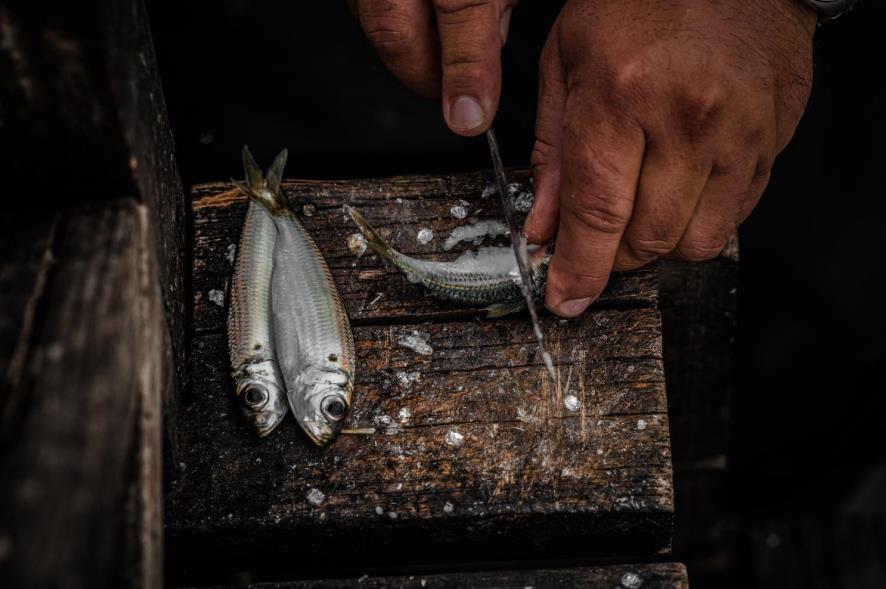
In a nutshell, the most significant difference between boning knives and fillet knives lies in their preferred use scenarios.
Boning knives are more rigid and can debone the meat, remove the skin, fat and connective tissue, and cut through small bones and ligaments. Compromising precision, they can be used effectively on fish.
Fillet knives, on the other hand, feature flexible blades that are only suitable for preparing fish. They offer better control, thus a better end result, but aren’t as versatile as boning knives.
Knife design and construction
In terms of construction, both knives are very similar and can often be mistaken for the other, especially by your average home cook.
Although they can both come in various sizes, they tend to be on the smaller side.
Fillet knives are thinner and more flexible in order to move around the delicate meat of fish. Boning knives are thicker and stiffer, ideally lacking the flexibility of a fillet knife.
They can be straight or arched, but their thickness should be consistent across the board.
Both knife types feature a prominent curve, but the curve on fillet knives is wider while boning knives tend to have a more even length with a mildly curved, pointed end.
The pronounced upward curve of a fillet knife makes it easier to perform smooth, long cuts, which is desirable when filleting fish, but less useful in other situations.
Knife uses
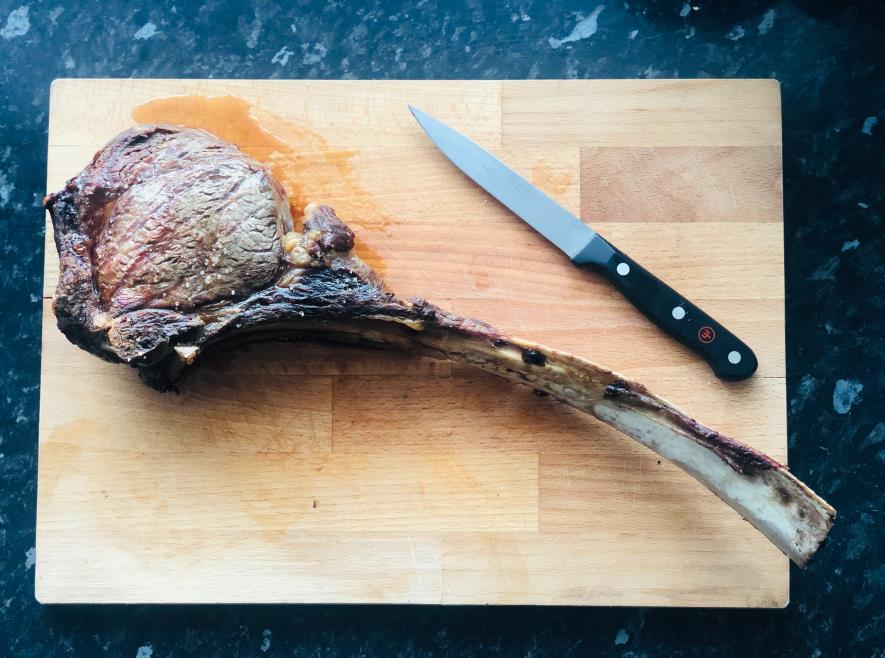
Although they are sometimes used interchangeably, these knives should be limited to their desired use cases for optimal results.
Boning knives perform best when preparing raw meat and are versatile enough to deal with fish decently. Although they won’t offer the same level of control, they will get the job done.
This makes them the preferred choice of customers who need more utility for their money, who are equipping their kitchens, or who don’t prepare enough fish to worry about a specialized tool.
Yet, for more advanced cooks or customers who are looking to improve their fish dishes, a fillet knife will offer much better results with less effort.
| Fillet knife | Boning knife |
| Filleting fish | Separating meat from bones |
| Removing fish scales and skin | Removing skin from meat |
| Deboning fish | Cutting through bones |
| Finely mincing onions | Cutting through ligaments and sinew |
| Preparing fruit and soft vegetables | Carving cake, cutting the core of fruit |
Apart from their standard use cases, both these knives can be practical when used a bit more creatively. The stiff blade of a boning knife can be very useful when carving cake and other pastries. It also makes for a great choice when cutting fruit like apples and mango.
A fillet knife works great when finely mincing herbs, onions, or garlic. The level of control it offers can also improve the presentation of fruit and softer vegetables, but that generally applies more to precision cuts rather than effective daily preparation.
Required cutting techniques
Neither knife type requires an abrupt learning curve, so they can both be used effectively by beginner cooks as well as more experienced chefs.
Due to the nature of their tasks, boning knives should be held in a firm grip and handled with some confidence. A handle grip with all fingers wrapped around the handle or a pinch grip offer enough stability to apply pressure onto the meat and bone safely.

When cutting, the blade should be held firmly against the meat and moved in long strokes to pull the meat away from the bone without damaging it.
With fish meat being more delicate, a softer grip is required to work with a fillet knife. A cook should take advantage of the flexible blade and work their way around descaling the fish, removing the fins, skin, and entrails, then gently removing the meat from the spine.
Price range
A decent filleting knife costs around $40, but you can expect to see much higher prices for longer knives or those made by certain manufacturers. Higher-end options are generally purchased for a bit over $100.
Since they offer more utility, you’ll probably find a wider range of prices for boning knives. They can sell for as low as $15, although you should expect chefs and busier home cooks to invest in higher-quality tools instead.
Depending on the materials used, as well as the manufacturer, the price of a boning knife can sometimes surpass $120.
Buy Wholesale Knives and Start Scaling up with Us Today
Contact us and connect with a sales rep to get a free quote.
Should you sell boning knives or/and fillet knives in your store?
Filleting knives are considered somewhat essential kitchen tools; many of them can double as boning knives, granted they are not used to cut through bone.
They are often included in knife sets at one of their standard sizes, although customers looking for a certain degree of quality will generally prefer them as standalone purchases.
Unless you’re targeting customers who regularly work with different cuts of meat, such as poultry, beef, or lamb, a fillet knife is a more flexible choice – in more ways than one.
If you choose to carry fillet knives in your store, they pair well with fish tweezers that can remove pin bones and scissors to remove the fins.
Boning knives don’t usually feature in standard knife sets but are sold more as specialist knives. However, there are many sets aimed at professionals that include them.
If you decide to start selling boning knives, it would probably be a good idea to stick with high-quality choices, since they are generally more appealing to pros.
Wrap up
It’s common for people to want to save time, which is why they can sometimes choose the wrong tool for a job, just because it is more readily available.
However, there are many people who aren’t ready to sacrifice the quality of their results by cutting corners. When catering to those customers, it’s important to understand and accurately depict both of these knives’ advantages and disadvantages.
Even when professionals aren’t your main concern, properly educating your customers and offering them the best solutions to their kitchen dilemmas won’t go unnoticed.
Hopefully, you’ll be more prepared to answer various demands after reading this article.
And if you feel prepared enough to start selling these tools in your store, make sure to check our boning knife sample. LeeKnives offers advantageous wholesale prices for high-quality tools, that can be customized and delivered directly to your storefront.
The only effort required of you during this entire process is requesting a quote.
